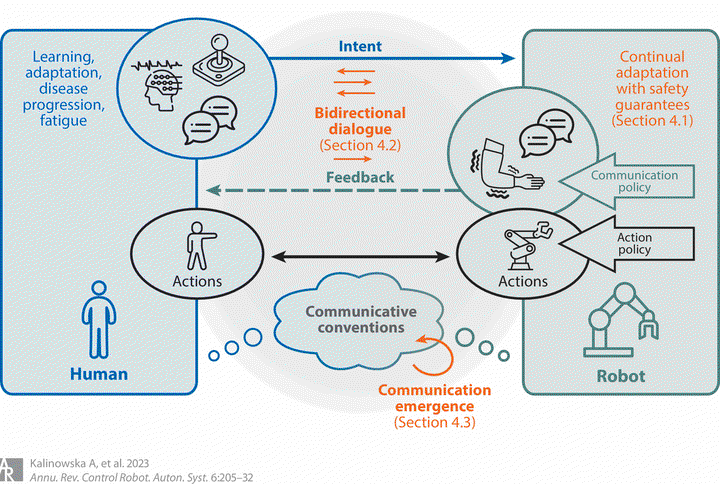
Abstract
Early research on physical human–robot interaction (pHRI) has necessarily focused on device design—the creation of compliant and sensorized hardware, such as exoskeletons, prostheses, and robot arms, that enables people to safely come in contact with robotic systems and to communicate about their collaborative intent. As hardware capabilities have become sufficient for many applications, and as computing has become more powerful, algorithms that support fluent and expressive use of pHRI systems have begun to play a prominent role in determining the systems’ usefulness. In this review, we describe a selection of representative algorithmic approaches that regulate and interpret pHRI, describing the progression from algorithms based on physical analogies, such as admittance control, to computational methods based on higher-level reasoning, which take advantage of multimodal communication channels. Existing algorithmic approaches largely enable task-specific pHRI, but they do not generalize to versatile human–robot collaboration. Throughout the review and in our discussion of next steps, we therefore argue that emergent embodied dialogue—bidirectional, multimodal communication that can be learned through continuous interaction—is one of the next frontiers of pHRI.